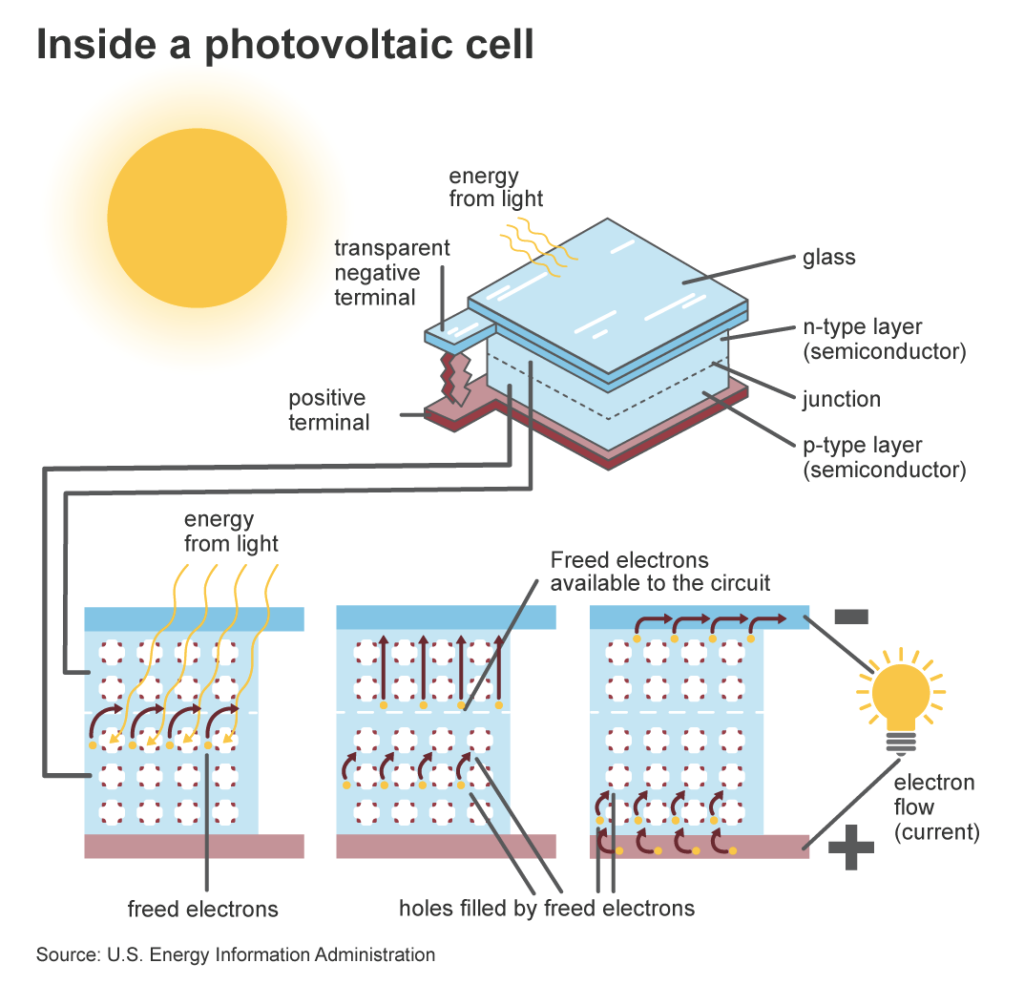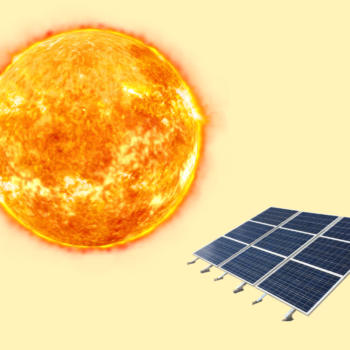|
|
In a world where innovation and environmental consciousness intertwine, a promising revolution is dawning on our transportation landscape.
Imagine a vehicle that harnesses the boundless power of the sun, gracefully gliding through the streets without a drop of fossil fuel.
Welcome to the world of solar vehicles, where cutting-edge technology and sustainable ideals converge to redefine the way we traverse the globe.
Gone are the days when the concept of solar-powered transportation seemed like a distant dream confined to the realm of science fiction. Today, with advancements in solar energy and automotive engineering, solar vehicles are no longer a mere concept but a tangible reality.
By leveraging the sun’s inexhaustible energy, these innovative machines are rewriting the rules of mobility, offering a compelling alternative to traditional gasoline-powered vehicles.
Join us as we embark on a thrilling journey into the realm of solar vehicles, exploring the intricacies of their design, the power of their solar cells, and the extraordinary potential they hold for transforming our planet’s transportation infrastructure.
Discover how these sun-kissed marvels are carving a path toward a cleaner, greener future where sustainability and mobility coexist harmoniously.
The Evolution of Solar Vehicles
Solar vehicles have come a long way since their inception. Initially, they were mere experimental projects aimed at showcasing the possibilities of harnessing solar energy for propulsion.
However, with advancements in technology and growing environmental concerns, solar vehicles have evolved into viable transportation solutions.
Historically, solar vehicle development traces back to the 1950s, when the world witnessed the first solar-powered vehicle prototypes. These early attempts, though limited in practicality, laid the groundwork for future innovations.
Notable milestones include the “Quiet Achiever” developed in Australia in 1982, the “Sunraycer” winning the inaugural World Solar Challenge in 1987, and the “Nuna” series of solar cars from the Netherlands winning multiple World Solar Challenges.
Design and Components of Solar Vehicles

source: https://www.sciencelearn.org.nz/images/2182-solar-car-sketch
The design of solar vehicles encompasses a careful balance between efficiency, aerodynamics, and aesthetics.
The integration of solar panels is a key consideration, as their positioning and orientation significantly impact the vehicle’s ability to capture solar energy. Ideally, solar panels should be placed on the vehicle’s roof or other exposed surfaces with maximum sun exposure.
Additionally, advancements in solar cell technology have led to the development of flexible and lightweight panels that can conform to the vehicle’s contours without sacrificing efficiency.
A crucial component of solar vehicles is the battery and energy storage system. Solar energy generated by the panels is stored in high-capacity batteries, providing a steady power supply for propulsion. Innovations in battery technology, such as lithium-ion batteries, have significantly improved the energy storage capacity and overall performance of solar vehicles.
To enhance efficiency, solar vehicles employ lightweight materials and aerodynamic designs. By reducing weight and minimizing air resistance, these vehicles can maximize their range and minimize energy consumption.
Advanced composite materials, such as carbon fiber, are employed to construct lightweight vehicle frames, ensuring strength without compromising efficiency.
Solar Cell Technology

source: https://www.eia.gov/energyexplained/solar/photovoltaics-and-electricity.php
Solar cells are the heart of solar vehicles, responsible for converting sunlight into usable electrical energy.
The most commonly used solar cells in solar vehicles are photovoltaic (PV) cells, which rely on the photovoltaic effect to generate electricity when exposed to sunlight. These cells are typically made of semiconducting materials, such as silicon.
Over the years, solar cell technology has witnessed significant advancements.
Efficiency improvements have been achieved through various techniques, including multi-junction cells, which utilize multiple layers of different semiconducting materials to capture a broader spectrum of sunlight.
Furthermore, research is ongoing to develop new materials, such as perovskite-based solar cells, that have shown great promise in terms of efficiency and cost-effectiveness.
Despite these advancements, challenges persist in solar cell technology for vehicles.
One of the primary issues is achieving high conversion efficiency while maintaining durability and cost-effectiveness. Additionally, the limited space available on vehicles for solar panel integration poses constraints on the total energy that can be harvested.
Researchers continue to explore solutions to these challenges, such as optimizing solar panel placement and exploring novel materials and designs that maximize efficiency without compromising durability.
The future of solar cell technology in vehicles holds tremendous promise.
Ongoing research focuses on improving the efficiency of solar cells, developing flexible and lightweight solar panels, and exploring new materials that can enhance energy conversion.
These advancements have the potential to unlock greater energy harvesting capabilities, extending the range and practicality of solar vehicles.
Benefits of Solar Vehicles
Solar vehicles offer a plethora of benefits, both for individuals and the environment.
One of the most significant advantages is their minimal environmental impact. Solar-powered vehicles produce zero tailpipe emissions, contributing to cleaner air and reduced greenhouse gas emissions.
By transitioning to solar vehicles, we can make significant strides in combating climate change and reducing our dependence on finite fossil fuel resources.
Another notable benefit is energy independence. Solar vehicles harness sunlight, a renewable and abundant energy source, thereby reducing reliance on conventional fossil fuels. This can lead to greater energy security and stability, mitigating the risks associated with fluctuating fuel prices and geopolitical tensions.
Not to mention that solar energy is completely free!
Challenges of Solar Vehicles
Solar vehicles also face challenges that need to be addressed for widespread adoption.
One major issue is energy storage. Solar energy is not available around the clock, requiring effective energy storage systems to power vehicles during periods of low sunlight or at night.
Battery technology advancements are crucial in addressing this challenge, enabling solar vehicles to have longer ranges and improved usability.
Limited range is another challenge that solar vehicles face.
The amount of energy that can be harvested from solar panels on a vehicle is inherently limited by the available surface area. As a result, solar vehicles typically have shorter ranges compared to conventional gasoline-powered vehicles.
However, advances in battery technology and energy-efficient designs can help alleviate this limitation and extend the range of solar vehicles.
Additionally, the infrastructure required to support solar vehicles is a significant consideration. Charging stations equipped with solar panels would be necessary for extended trips or areas with limited sunlight.
Collaborative efforts between governments, businesses, and the energy sector are essential to develop a robust charging infrastructure that complements the widespread adoption of solar vehicles.
The Future of Solar Vehicles
The future of solar vehicles holds immense potential to reshape the transportation landscape. As solar cell technology continues to improve, solar vehicles will become more efficient, reliable, and affordable.
We can envision a world where solar-powered cars are commonplace, seamlessly integrated into urban infrastructure, and promoting sustainable mobility.
Solar vehicles have the potential to play a vital role in sustainable urban planning. They can reduce traffic congestion, air pollution, and noise levels in cities, creating cleaner and healthier environments for residents.
Additionally, solar vehicles can complement existing public transportation networks, providing eco-friendly alternatives for short-distance travel and reducing the carbon footprint of urban commuters.
For instance, the Tindo bus in Adelaide, Australia, runs entirely on solar power, eliminating tailpipe emissions and reducing noise pollution.
Technological advancements in solar vehicles are intrinsically tied to research and development efforts. Continued collaboration between academia, industry, and government entities is crucial to drive innovation in solar vehicle technology.
Investments in research and development can lead to breakthroughs in solar cell efficiency, battery technology, and lightweight materials, further improving the performance and practicality of solar vehicles.
Policy support is also essential in accelerating the adoption of solar vehicles. Governments can incentivize the purchase of solar vehicles through tax credits, subsidies, and infrastructure development.
By creating a favorable regulatory framework, policymakers can encourage manufacturers to invest in solar vehicle production and promote the establishment of charging infrastructure networks.
Furthermore, collaborative efforts are needed to address the challenges associated with solar vehicle adoption.
Partnerships between automotive manufacturers, energy companies, and infrastructure developers can facilitate the integration of solar charging stations and ensure seamless compatibility between vehicles and charging infrastructure.
Sharing best practices and knowledge across industries can foster innovation and drive the widespread implementation of solar vehicles.
Solar Car Models: Shining a Light on the Future
While solar car models are still relatively limited in availability, a few notable prototypes and concept vehicles have emerged, showcasing the immense potential of solar-powered transportation.
Lightyear One
One prominent solar car model on the horizon is the Lightyear One, developed by the Dutch company Lightyear.
This sleek, four-wheel electric vehicle is equipped with a roof covered in solar cells, allowing it to charge its batteries using sunlight.
With an estimated range of over 400 miles (640 kilometers), the Lightyear One aims to provide practical long-distance solar-powered driving.
The company has already begun taking pre-orders and plans to deliver the first units to customers in the near future (around 2024).
Aptera
The Aptera is an ultra-efficient solar electric vehicle that pushes the boundaries of energy efficiency.
Its aerodynamic design, lightweight materials, and ample solar panel coverage contribute to an estimated range of up to 1,000 miles (1,600 kilometers) on a full charge.
The Aptera utilizes both plug-in charging and solar energy to power its electric drivetrain.
The company has started accepting reservations and plans to begin deliveries soon (even later this year).
The Bottom Line
Solar vehicles represent the next generation of sustainable transportation. By leveraging the power of the sun, these remarkable machines can revolutionize our approach to mobility, creating a cleaner and more sustainable future.
Through technological advancements, policy support, and collaborative efforts across industries, we can ensure that solar vehicles become an integral part of our transportation infrastructure.
The future of solar vehicles is bright, and with each passing day, it grows brighter.













No Comments